|
Contribution by Erika Garcia, PT, DPT
At some point in your life, you have witnessed a fall, heard of someone falling, or have slipped and fallen yourself. But the question remains, why do people fall and will it happen to me? To begin with, falls are correlated with balance. When we think of balance, we often think of a tightrope circus star or a ballerina spinning on her toes. However, balance is involved with the simplest actions, such as walking, standing, and even sitting. So how do we know if we have poor balance? If you struggle with the simple activities mentioned above, you will need a physical therapist to help identify the problems. Struggling with stairs, walking on the grass, or even looking back and forth at items in the grocery store could also be indicators of poor balance. Unfortunately, more than one third of adults 65 and older fall each year in the United States and 20% to 30% of people who fall suffer moderate to severe injuries” (APTA, 2018). This bleak statistic reveals the importance of balance and why you should be concerned about it. In addition, one of the main injuries involved with a fall is a broken femur, the bone that attaches your leg to your hip. In individuals older than 60, a broken hip that does not penetrate skin can lead to a 17% death rate and a complication rate of 54% (MoveForwardPT, 2013). Thus, if you or someone you love is struggling with performing simple activities and requires assistance, seeing a physical therapist is necessary. Luckily, Illinois is now a direct access state, meaning you do not require a physician's referral to see a physical therapist. All you have to do is give us a call at Crystal Lake Physical Thearpy, Inc. and we will schedule you to work with one of our experienced therapists. By improving balance, quality of life is improved and falls can then be prevented. So if you have a fear of falling or have fallen in the past, please give us a call and we will be glad to help you. Also, check out our Free Balance Training Workshop being held at Del Webb Sun City's Prairie Lodge in Huntley, IL (in the Birch Room) on April 24, 2019. Click below to register for our workshop as seating is limited!
1 Comment
Contribution by Alyssa Pollastrini, PT, DPT Approximately 50,000 Americans are diagnosed with Parkinson’s Disease each year and about a half a million Americans are affected with this disease at a given time. This disease is progressive, and unfortunately the main medication, levodopa, becomes less effective over time. Although there is no cure for Parkinson’s Disease, there is research supporting that non-contact boxing is very effective in slowing the progression of Parkinson’s Disease. Here are 5 ways boxing can help! 1. Balance Balance is commonly affected in those with Parkinson’s Disease and it can lead to falls! Boxing challenges balance in a safe environment. Typically non-contact boxing involves a lot of footwork where you change direction, speeds, and narrow your base of support. By continually doing these activities, balance therefore starts to improve. Ruth Burr attended boxing through Rock Steady Boxing out in Utah, and here is her testimonial: When I started going to the boxing program, it made a dramatic difference! My balance gradually got better and I stopped stumbling and falling. I also gradually started being able to get up from the floor. At first, these improvements were slow and awkward, but my abilities improved a great deal. 2. Walking People affected with Parkinson’s Disease often shuffle and have freezing episodes. It is also common in the later stages of the disease to have to use a cane, walker, or wheelchair. Boxing is a high intensity exercise and research shows that this high intensity aspect is very important for neurological diseases. Different chemicals get released in your brain that help change the wiring in your brain. As a result, people don’t shuffle their feet as much, have as many freezing episodes, and may not need an assistive device! Katie Kleist in Peoria IL was diagnosed with early onset Parkinson’s Disease at age 20. Her symptoms were continuing to progress. She then found a boxing program through Rock Steady Boxing: During my pregnancies, as well as time in which I had to transition medications, I had to use a walker. I now can jump rope up to a count of 42. I would occasionally fall to my bottom because I would freeze as I attempted to pull open the fridge. I can now walk backwards on a 2×4 board as part of an obstacle course. 3. Strength Strength is also commonly affected with Parkinson’s Disease. People start developing a more forward bent posture, and therefore it is very important to strengthen back and hip muscles to improve that posture. During boxing, punching helps improve shoulder and back strength. Circuit training exercises are also performed during boxing sessions as well which include both leg, hip, shoulder, and back strengthening. Martin Zagarinski’s granddaughter wrote a testimonial for her grandpa who attended Rock Steady Boxing: I was utterly shocked at how much strength he had gained. I don’t even think that I, as a healthy teenager, could master some of the skills he was performing! 4. Coordination Coordination is also affected with those diagnosed with Parkinson’s Disease. Boxing combines both footwork and punching together which helps to improve coordination overall. The high intensity aspect described previously also helps change the wiring in the brain as well that has an effect on coordination. Gary Powers from Charlottesville started attending Rock Steady Boxing and noticed a difference in his coordination: I am now dressing myself, driving better and to anywhere I want to go. My signs of Parkinson’s have slowed down and many of my athletes have commented about improvements. 5. Fatigue and Endurance It is very common in Parkinson’s Disease to experience extreme fatigue and decreased endurance. As the symptoms progress such as rigid muscles and tremors, this is all very fatiguing on the body! Due to the positive benefits of high intensity exercise has on the brain, boxing also helps decrease fatigue and improve endurance. Here is a testimonial from Liz Voogjarv who attended Rock Steady Boxing: I used to feel like a person living with Parkinson’s – it was my constant companion. Now, I can sometimes forget that I have PD. It is fading more into the background in terms of how I define myself. Liz’s energy level was low, and fatigue had her napping on a daily basis. She often used many “s” words to explain how PD was affecting her – slow, shuffling, stiff, sad-faced, etc. Thanks to Rock Steady Boxing and physical therapy, those words have changed to sporty and smiley! Liz feels much more confident, resilient, and energetic.
Although there is no true cure for Parkinson’s Disease, boxing does help to slow the progression of the disease and helps improve strength, coordination, balance, walking, and decreases fatigue and improves endurance. Our Huntley Physical Therapy facility offers a non-contact boxing program where you will work one on one with a therapist for a full hour! And your insurance will cover your session! Contact us today to set up a consultation! Hip, pelvic and back pain are very common during pregnancy and often continue after delivery. Moms-to-be think it’s normal to feel pain while pregnant, but this is not true! Check out these tips so you can make the adjustments to protect your hips and back. 1. Use good lifting technique: never bend forward to pick anything up with your legs straight, avoid extreme reaching and avoid twisting your back. 2. For standing activities such as cooking, changing diapers, or even brushing your teeth; keep a small foot stool nearby and place one foot up on it, changing every 10-15 minutes. If you are standing in front of a cabinet, open the door and rest one foot inside of it! 3. Avoid prolonged positions: Take a break from sitting or standing every 15-30 minutes 4. Sleep on your side with a pillow between your knees. If you are pregnant, lay on your left side. 5. Avoid activities that may strain the hips and back, such as crossing your legs, standing with all of your weight on one leg, climbing stairs too often, maintaining any unbalanced position (like carrying your child on one hip). 6. Get in and out of the car by sitting into the car first, then turning to face the front. Never reach across your car for bags or other items on the other side. 7. Get in and out of bed by rolling onto your side first, then raise yourself up. Never sit straight up from lying straight on your back. 8. Avoid holding your breath. When lifting, tighten your core and pelvic muscles to prevent increased strain on your back and pelvic floor. This is called a “pelvic brace”.
Following these tips can help reduce your pain and prevent further injury during pregnancy. It is also important to continue your new movement patterns into postpartum to prevent continued or returned pain. If you have any questions or if you continue to experience pain, contact us at Crystal Lake Physical Therapy by calling (815)893-8480 or click below to schedule an appointment. Contribution by Alicia Magro, PT, MPT What is the “core”? The core consists of muscles that support the back and help maintain an upright posture including the pelvic floor, front and side abdominals and back muscles. Due to a growing belly it can be a challenge to keep your core strong during pregnancy and following pregnancy, Why is it important to keep your core strong during pregnancy? A strong core improves posture which leads to decreased back pain. Research shows that more than 75% of expectant mothers experience back pain. A strong core can also improve with ease of labor and lead to a quicker recovery postpartum. How to safely work the “core” during and after pregnancy? Avoid laying in a flat position after the first trimester which may put pressure on the vein that returns blood from your legs. This may interfere with the blood flow to the placenta and baby. Also be cautious with doing forward planks or typical “crunches” during pregnancy or postpartum as this may cause stress on the pelvic floor as well as could lead to a separation in the abdominals known as diastis recti. 1. Bird Dog
2. Pelvic Tilts Standing At A Wall
3. Seated Marches
4. Side Plank (Avoid if you have any shoulder problems)
5. Squats
6. Perform Kegels Kegels are a way to engage your pelvic floor muscles. It is best to attempt these first in sitting or lying down and then incorporate with all exercises. These are especially important postpartum to avoid pelvic floor issues including incontinence.
Keeping your core strong will make your pregnancy healthier and recovery much easier. If you are struggling with pain or would like more help with exercise see your physical therapist for guidance. They can tailor a program just for you and make sure to avoid injuries. Click below to schedule an appointment or call us today at (815)893-8480. Did you know that 80% of the bodily changes occurring during pregnancy happen in the first trimester! Isn’t that astounding? A woman’s body must adjust quickly to a 40% increase in fluid volume, increased heart and respiratory rates and many other changes that may affect us in different ways. The fluid volume increase, for example, can make our connective tissues weaker—our tendons can get a little mushy and our nerves and blood vessels a bit softer. This extra fluid and tissue weakening makes us more prone to things like leg swelling, varicosities, tendonitis, carpal tunnel syndrome, or sciatica.
The hormonal changes in pregnancy play a big role in our metabolism, mood, memory and, of course, ligamentous laxity. Some pregnant women experience instability not only in the pelvis and hips, but also in the joints of the spine, elbows, and wrists. Our musculoskeletal system is taxed by these changes even before the baby gets very big. Then, as baby grows, we might begin seeing rectus abdominis separation (“diastasis recti,”) spinal problems from posture and center of gravity changes, even rib dysfunction as the ribs are forced out and up to make room for belly. Foot pain from falling arches from the sudden weight gain can occur, and on and on. Women's pelvises are designed to have less stability allowing for bony separation during delivery. This is great because we need to fit the baby out, but this also leaves women more vulnerable to injury leading up the main event. This is one of the causes of muscle and joint aches and pains during pregnancy. Also, throughout pregnancy the pelvic floor muscles must withstand a great degree of pressure due to weight gain and continuous growth of the baby. In the pelvic girdle, there is a list of other changes that can be downright scary to a pregnant or postpartum mama. And most women are not warned about these potential problems. Pelvic girdle pain manifesting as coccyx, pubic or sacroiliac joint pain; groin or hip pain; pelvic muscle or nerve pain; plus urinary or fecal incontinence or pelvic organ prolapse are some of the more common things occurring during or after pregnancy. After birth, as Mom is busy caring for her newborn and any other children at home—schlepping heavy car seats, strollers, laundry baskets, breastfeeding through the day and night, lifting ever-heavier babies into and out of cribs—she wonders why everything hurts, or why she feels a clicking in her pelvic bones when she lifts her leg! Well, she is busy performing exceedingly challenging tasks with a sub-optimal musculoskeletal system (not to mention sleep deprivation!) It is well documented that both pregnancy and vaginal birth increases a woman’s risk of developing pelvic organ prolapse or incontinence later in life. And many women think that leaking during or after birth is “normal” because their friends, moms, aunts, and sisters leaked. Not to mention, there are 20 different brands of incontinence pads to choose from in the drugstore, so it “must” be normal. Well that just isn't true! Leaking and pelvic organ prolapse is common...but NOT normal! The same holds true for back or pelvic pain. Sure pregnancy puts demands on our bodies, but there is no reason to “put up” with pain, leaking, prolapse, numb hands or legs! There is a health professional who knows all about this—a physical therapist specially trained in women’s health issues and the pelvic floor. You can benefit from pelvic floor physical therapy during all stages of pregnancy. In the pre-partum phase, women can learn about proper body mechanics, posture, breathing mechanics during delivery, pelvic stabilization exercises, stretching, supportive bracing and balance training. They can also benefit from pelvic floor muscle training in preparation for pregnancy and delivery. Your pelvic floor physical therapist can also be extremely beneficial throughout the duration of your actual pregnancy and can successfully help you to manage symptoms of pain or urine leakage. The post partum period is also a very crucial time to consult with your physical therapist. It is common to give yourself 6 weeks of pelvic rest following delivery. It is never normal to leak or have pelvic floor pain that is linger in the post-partum phase. Leaking is a symptom of pelvic floor dysfunction. If you leak, stop the offending activity and see a physical therapist. This type of pelvic floor dysfunction can easily be addressed with a non-invasive exercise based program where you can see results and in many cases complete resolution of your symptoms in as little as 3 weeks! Pelvic/perineal pain is also not normal and can be a sign of hypertonicity (spasm) of the pelvic floor, which can be addressed with physical therapy. Call us today at Crystal Lake Physical Therapy or click the link below to schedule an appointment to connect with a specially trained pelvic floor physical therapist. According to the Centers for Disease Control and Prevention (CDC), sales of prescription opioids have quadrupled in the United States, even though "there has not been an overall change in the amount of pain that Americans report." In response to a growing opioid epidemic, the CDC released opioid prescription guidelines in March 2016. The guidelines recognize that prescription opioids are appropriate in certain cases, including cancer treatment, palliative care, and end-of-life care, and also in certain acute care situations, if properly dosed. But for other pain management the CDC recommends non-opiod approaches like physical therapy.
Patients should choose physical therapy when: 1. The risks of opioid use outweigh the rewards. Potential side effects of opioids include depression, overdose, and addiction, plus withdrawal symptoms when stopping opioid use. Because of these risks, experts agree that opioids should not be considered first line or routine therapy for chronic pain. 2. Patients want to do more than mask the pain. Opioids reduce the sensation of pain by interrupting pain signals to the brain. Physical therapists treat pain through movement while partnering with patients to improve or maintain their mobility and quality of life. 3. Pain or function problems are related to low back pain, hip or knee osteoarthritis, or fibromyalgia. The CDC cites "high-quality evidence" supporting exercise as part of a physical therapy treatment plan for these conditions. Consistent physical therapy for these diagnoses can be very beneficial in both managing and treating the pain and discomfort. 4. Opioids are prescribed for pain. Even in situations when opioids are prescribed, the CDC recommends that patients should receive "the lowest effective dosage," and opioids "should be combined" with non-opioid therapies, such as physical therapy. 5. Pain lasts 90 days or more. At this point, the pain is considered "chronic," and the risks for continued opioid use increase. An estimated 116 million Americans have chronic pain each year. The CDC guidelines note that non-opioid therapies are "preferred" for chronic pain. In August 2018 the State of Illinois became a direct access state for physical therapy. That means that you no longer need a prescription or referral from your physician to have physical therapy services. If you are interested in starting physical therapy give us a call today at (815)893-8480 or click below to schedule an appointment. Dry needling is the process of inserting a thin, filiform (acupuncture) needle directly into an area of a muscle that has developed a trigger point. Trigger points are hyper irritable areas of muscles that can cause significant pain and movement problems. This process is considered “dry” because it does not involve the use of medication or injections. Physical therapists must undergo specialized training beyond their Doctoral degree that allows them to perform Trigger Point Dry Needling. This includes extensive hands-on training and American Physical Therapy Association approved Certification.
You may be a candidate for this type of treatment if you answer yes to any of the following questions: 1. Do you live day to day on pain medications? Pain can be a good thing because it tells us when something is wrong in our body.However, pain in your muscles that lasts for a long time may be a result of trigger points in your muscles.These can be fixed with dry needling instead of masked with pain medications 2. Do you rely on massage and other forms of brief relief from your pain? Massage and other forms of manual trigger point release may take a long time to rectify the problem or not be effective at all. Dry needling can directly relax the trigger point and provide significant pain relief and muscle relaxation. 3. Are you looking for pain relief with minimal side effects? The side effects of dry needling are very minimal and include achiness and general fatigue (much like working out would cause) These symptoms usually last 24-48 hours and ice is suggested to help. 4. Do you have decreased range of motion or freedom? Often times trigger points (that painful muscle knot) can cause tightness and stiffness. That can then lead to the muscle shortening in length (loss of flexibility). Dry needling along with a stretching program can help you increase your range of motion and flexibility once more helping you become more free and get back to the things you were doing. 5. Do you want to be active and live a healthier lifestyle? One thing is certain, chronic trigger points do not just go away. And not doing anything about them can have long-term effects on your body that are extremely hard to reverse. Dry needling can help take care of the pain and stretching can help you get the flexibility back and then you get back to living life! Dry needling is not appropriate for every individual and certain medical conditions need to be taken into consideration. When utilized correctly, dry needling can be a powerful tool in reducing pain and restoring function. This therapeutic intervention is currently only offered in our Crystal Lake office by Alecia Grounds, PT, DPT. Dry needling is not something that is covered by insurance and costs $75 for an hour session. Call Crystal Lake Physical Therapy at (815)893-8480 or click below if you have any questions about whether this service could be a good fit for you or to schedule your appointment. Physical therapists are movement experts who help people reduce pain, improve or restore mobility, and stay active throughout life. But there are some common misconceptions that often discourage people from seeking physical therapist treatment. It's time to debunk 7 common myths about physical therapy: 1. Myth: I need a referral to see a physical therapist. FACT: A recent survey by the American Physical Therapy Association (APTA) revealed 70% of people think a referral or prescription is required for evaluation by a physical therapist. However, a physician’s referral is no longer required in order to be evaluated by a physical therapist. The State of Illinois became a direct access state in August 2018 which means you are able to see a physical therapist first to address your pain and improve or restore your mobility. 2. Myth: Physical therapy is painful. FACT: Physical therapists seek to minimize your pain and discomfort—including chronic or long-term pain. They work within your pain threshold to help you heal, and restore movement and function. The survey found that although 71% of people who have never visited a physical therapist think physical therapy is painful, that number significantly decreases among patients who have seen a physical therapist in the past year. We don't necessarily believe in the no pain no gain theory and often the treatment you receive in physical therapy won't be painful at all but instead will be extremely beneficial in managing or alleviating the pain you are experiencing. 3. Myth: Physical therapy is only for injuries and accidents. FACT: Physical therapists do a lot more than just stretch or strengthen weak muscles after an injury or surgery. They are skilled at evaluating and diagnosing potential problems before they lead to more serious injuries or disabling conditions—from carpal tunnel syndrome and frozen shoulder, to chronic headaches and lower back pain, to name a few. 4. Myth: Any health care professional can perform physical therapy. FACT: Although 42% of consumers know that physical therapy can only be performed by a licensed physical therapist, 37% still believe other health care professionals can also administer physical therapy. Rehab technicians are usually unlicensed individuals who are legally allowed to help assist a licensed practitioner in the delivery of physical therapy services. However, at Crystal Lake Physical Therapy you will only be treated by a licensed physical therapist because we don't hire or utilize any unlicensed staff for treatment. Many physical therapists also pursue board certification in specific areas such as neurology, orthopedics, sports, or women’s health, for example. 5. Myth: Physical therapy isn't covered by insurance. FACT: Most insurance policies cover some form of physical therapy. Beyond insurance coverage, physical therapy has proven to reduce costs by helping people avoid unnecessary imaging scans, surgery, or prescription drugs. Physical therapy can also lower costs by helping patients avoid falls or by addressing conditions before they become chronic. If you are unsure about your insurance coverage, we would be more than happy to check your benefits for you! 6. Myth: Surgery is my only option. FACT: In many cases, physical therapy has been shown to be as effective as surgery in treating a wide range of conditions—from rotator cuff tears and degenerative disk disease, to meniscal tears and some forms of knee osteoarthritis. Those who have recently seen a physical therapist know this to be true, with 79% believing physical therapy can provide an alternative to surgery. 7. Myth: I can do physical therapy myself. FACT: Your participation is key to a successful treatment plan, but every patient still needs the expert care and guidance of a licensed physical therapist. Your therapist will leverage his or her specialized education, clinical expertise, and the latest available evidence to evaluate your needs and make a diagnosis before creating an individualized plan of care. If you are interested in setting up a complimentary consultation or would like to schedule an evaluation you can click the link below or call us at (815)893-8480.  You’re in your twelfth week of marathon training, and one morning you wake up to a sharp pain around your knee. You wait a few hours and pop a few ibuprofens, but the pain doesn’t subside. Who should you see? While it’s always a safe bet to consult your doctor, chances are they’ll recommend seeing a physical therapist, too. Physical therapists can help treat injuries and ease joint pain, but they can also help you become fitter and healthier, overall. Physical therapists are trained to recognize postural distortion patterns and other habits that could predispose you to injury both on and off the field. Doctors of Physical Therapy are movement specialists trained to keep the musculoskeletal system healthy. They are educated to recognize postural habits and biomedical disadvantages of each individual’s unique body. What Physical Therapists Can Do (That Your Doctor Can’t) 1. Assess your injury risk.The same way you see your primary care doctor for an annual check-up, it is also recommended that you get a full movement screen and postural assessment from a physical therapist. Movement screens can let you know where your weaknesses are, and where it’s most important to focus your efforts. A physical therapist can pick out subtle postural habits that could predispose you to injury depending on your activity. Being aware of these habits, in addition to knowing how to work on them, gives you the tools to stay injury-free all year-long. 2. Find the best type of workout for you. Physical Therapists gather all of your information from prior surgeries, diet, lifestyle, body type, body mechanics and posture to determine what activities would best fit your physique. Everyone has different muscle imbalances, range of motion and alignment issues, but a physical therapist can spot them and make recommendations accordingly. Have tight hip flexors from sitting all day? Cycling — in a similar seated position — might not be the best choice for you. Meanwhile, if you’ve got tight hamstrings from running several times a week, stretching those muscles with yoga could have positive results. PTs can also prep you for whatever’s in the pipeline. If you’re starting a new type of exercise or trying to increase the intensity of a current exercise routine, a prehab program will help you work through your personal issues. Not everyone may be cut out for running or spinning or even yoga, believe it or not! Targeted prehab before starting a new sport or challenge will help address muscle imbalances to prevent injury. That can include anything from mobility exercises for improved range of motion to mini band work for glut activation and strength. 3. Speed up your recovery.Many physical therapists will recommend massage or compression socks, pants or sleeves to help with recovery, in addition to foam rolling and mobility work. Additionally, physical therapy treatment often utilizes modalities such as ultrasound, infared light and cold laser treatments to help accelerate the healing process by reducing inflammation, improving circulation and reducing pain. Each of these FDA approved technologies are commonly used in an outpatient physical therapy setting. 4. Correct your alignment and postural issues.Feel stiffness in your neck and back, or areas of weakness and fatigue? It might be the result of a postural distortion, which can stem from repetitive movements (think: distance running, or carrying a heavy bag on one shoulder) or from muscle imbalances that send your alignment out of whack. With a simple assessment, your PT will be able to pinpoint where your specific issues are and how to deal. Someone who incorporates high variation in type and direction of movement will have a different postural presentation than someone who performs the same exercise, such as running. A physical therapist can recommend certain exercises and stretches that help improve your posture and balance. How to Get Started With A Physical Therapist If you are ready to take the next step towards health and wellness then please click below on the link to schedule an appointment. As a reminder, you no longer need a prescription or a referral from your physician to see a Physical Therapist in the State of Illinois (as of August 2018). So don't hesitate and give us a call today! (815)893-8480 2019 is almost here, and it’s the perfect time for assessing the year behind and looking forward to the changes we want to make in the new year to come. Health and fitness are obviously some of the top resolutions people make each year. According to Nielson’s online survey, here are the top 5 New Year’s Resolutions Americans made last year: Top 5 New Year’s Resolutions -Stay fit and healthy 37% -Lose weight 32% -Enjoy life to the fullest 28% -Spend less, save more 25% -Spend more time with family and friends 19% Your goals are just as important to us here at Crystal Lake Physical Therapy, and tailoring your physical therapy to your personal needs is just one of the ways we help. If any of these resolutions are on your list for the new year, here are some ways you can reach them all. Stay Fit and Healthy The best way to stay fit and healthy is to start with a plan. Just like a good chef prepares his menu carefully, listing out all of the ingredients, a healthy lifestyle requires listing the components that will help you the most. If you’ve faced a recent injury, a plan is key to a healthy recovery. At Crystal Lake Physical Therapy we give you the tools to get back to health and doing the things you love most. You can read some of our physical therapy tips to keep you healthy here. Lose Weight Losing weight is the ever elusive goal for many of us. There are two major changes needed for effective weight loss: changing nutritional habits and an exercise plan. There are numerous diets and exercise routines out there, so it’s really about choosing something that feels comfortable and manageable for you–and sticking to it. Find an accountability partner. And don’t feel like you have to make huge and drastic changes to make a difference, either. Sometimes incremental change is longer lasting. You can read more about the benefits of physical therapy for weight loss here. Enjoy Life to the Fullest
We all want to make the most of life, but oftentimes we let things get in the way. Sometimes the things we most want to do won’t happen unless you plan them. So get specific with what enjoying life to the fullest actually means for you. Is it finally taking those dancing lessons? Traveling? Or is it planning out that garden in your yard? Regardless of what a full life looks like for you, a strong, healthy body will enable you to do it. If you’re living in chronic pain, it’s going to prevent you from truly enjoying life to the fullest. Spend Less, Save More Making a savings plan takes discipline, but incremental planning is just as effective with finances. If you don’t already track and budget your expenses, start there. Give each dollar a job before you spend it. Planning a vacation for the summer? Break down a savings plan to know how much you need to put away each month until then. One big way to save money with healthcare costs is to take preventative measures with your health and fitness–and physical therapy can be one of those measures. Spend More Time with Friends and Family There are any number of things that can prevent us from spending more time with loved ones. Sometimes it’s work, long distances, or schedules just not matching up. See what you have on your plate that you can lighten up to make a little more room for friends and family in your life. Spending time and being social can be an integral part of self care. Living in pain is another obstacle that can prevent us from spending the time we want with those who mean the most to us. Find out what’s keeping you from making the time, and make plans to overcome those obstacles where you can. Whatever your resolutions are for the new year, we’re here to cheer you on and support you. We love nothing more than to see our patients living life as their best selves. This new year ahead also brings some new exciting changes for physical therapy as an industry! On August 16, 2018 our Governor Bruce Rauner signed new direct access legislature into law. That means that you no longer need a prescription from a physician in the State of Illinois to see a physical therapist. So there is no need to put off your New Year's resolutions! Get started today by contacting our clinic at (815)893-8480 or you can click below to schedule an evaluation. |
AuthorEmily Craigen, owner of Crystal Lake Physical Therapy, is a Doctor of Physical Therapy and a local Crystal Lake resident who is excited to bring health and wellness to her community. Archives
August 2023
Categories |
- Home
- About Us
-
What We Treat
- Arthritis
- Balance and Gait Disorders
- Back Pain and Sciatica
- Chronic Pain
- Elbow, Wrist and Hand Pain
- Fibromyalgia
- Hip and Knee Pain
- Incontinence
- Motor Vehicle Accident Injuries
- Multiple Sclerosis
- Neck Pain
- Pelvic Pain
- Pre-Surgical Rehab
- Post Surgical Rehab
- Shoulder Pain
- Sports Injuries
- TMJ Dysfunction
- Vestibular Rehab
- Work Injuries
- Myofascial Release
- MPS/Dolphin Neuro Stim
- Become A Patient
- Contact Us
- Blog
- Workshops
- Patient Resources










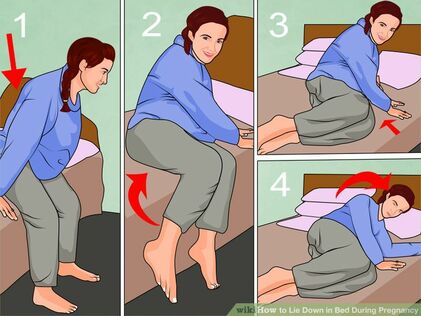

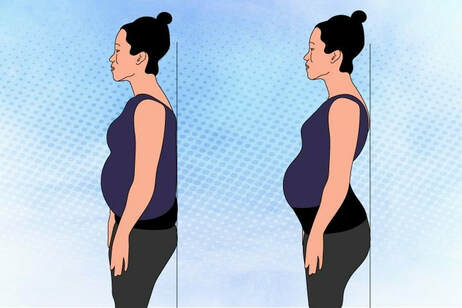
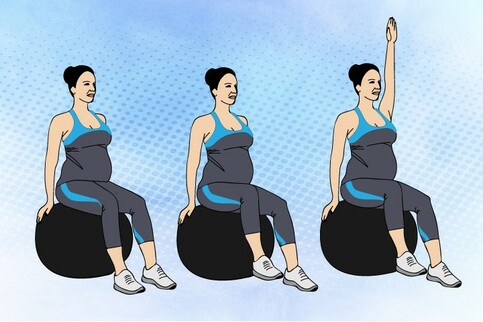




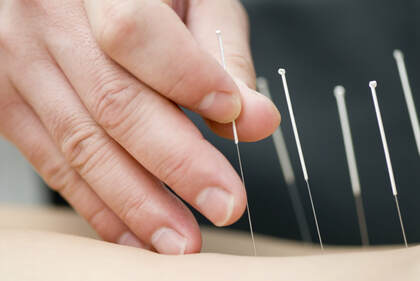


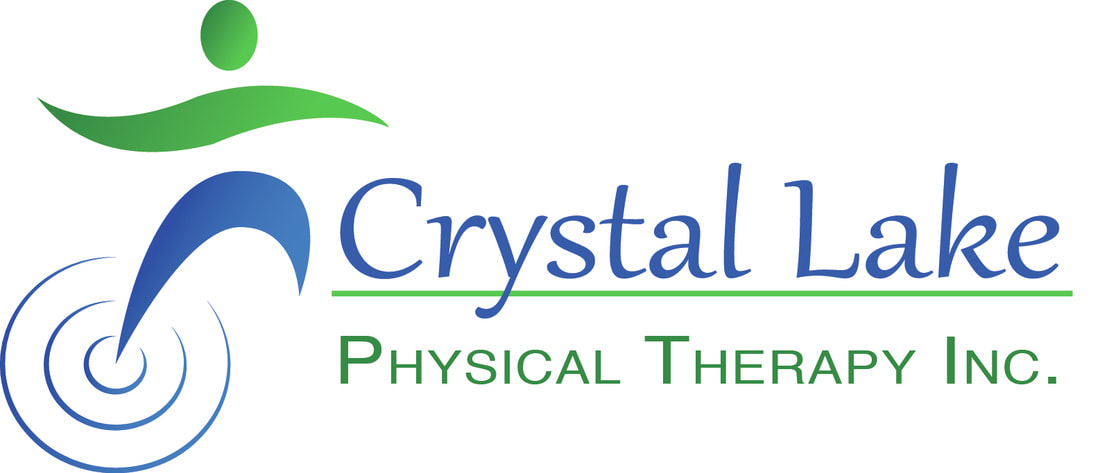

 RSS Feed
RSS Feed